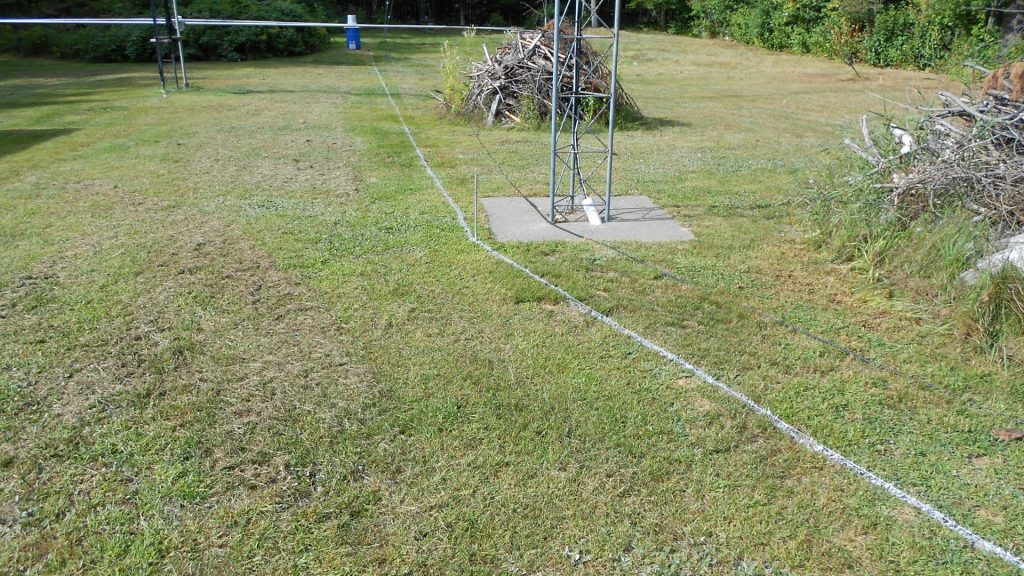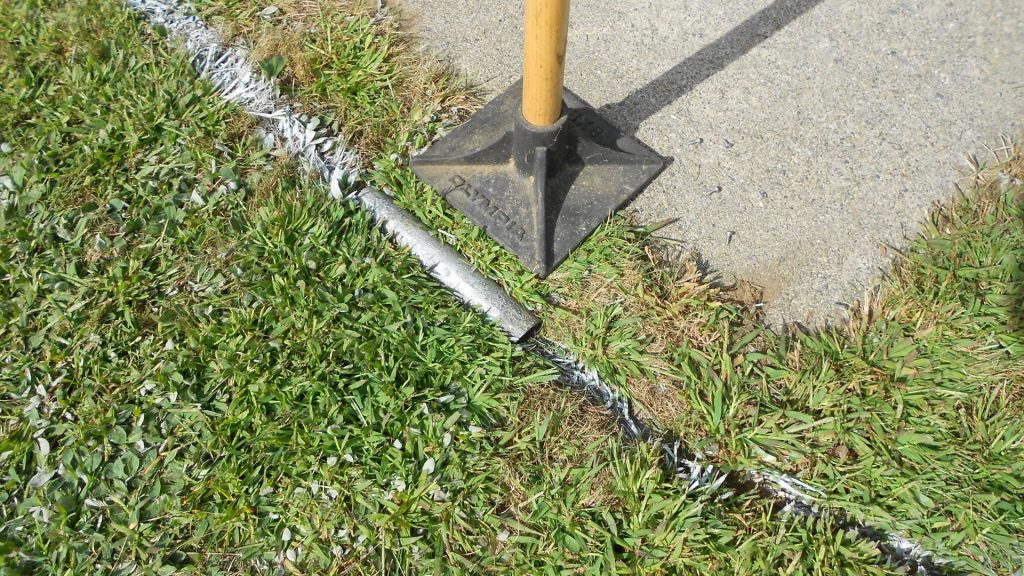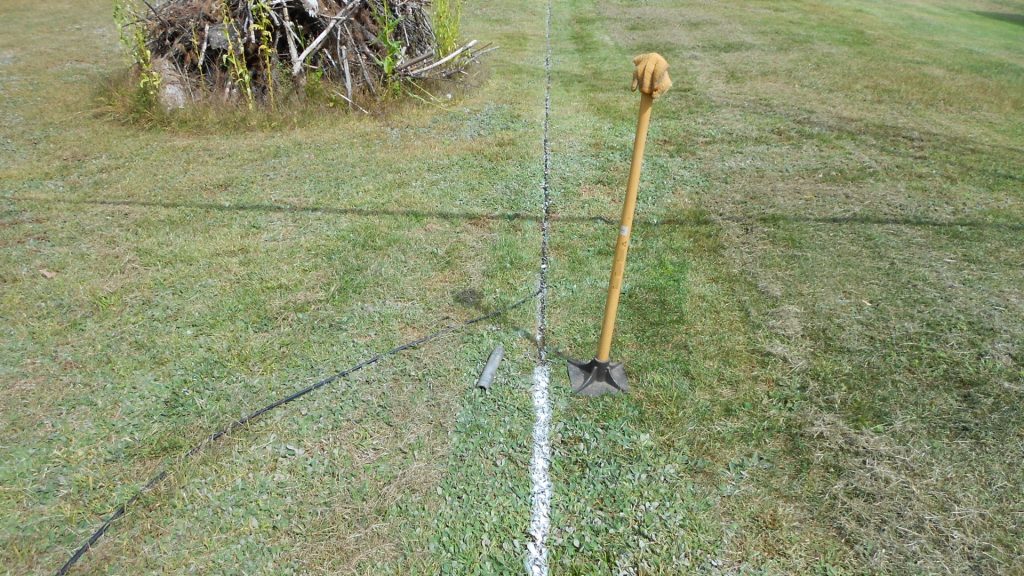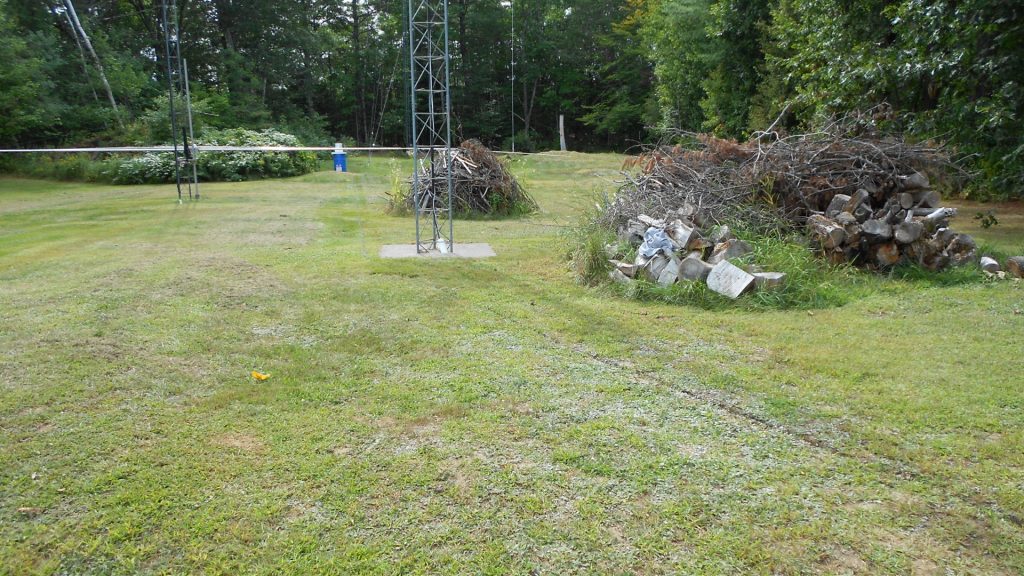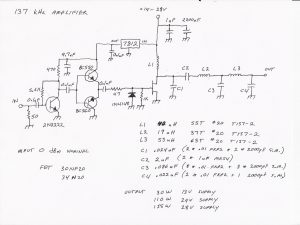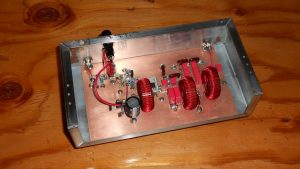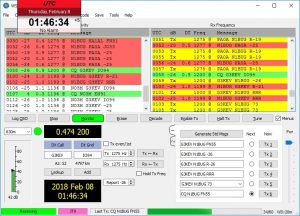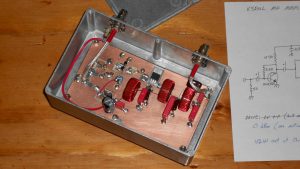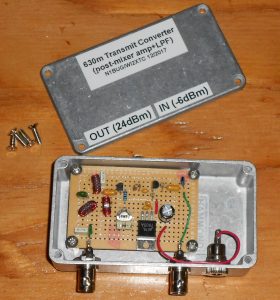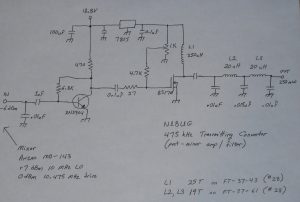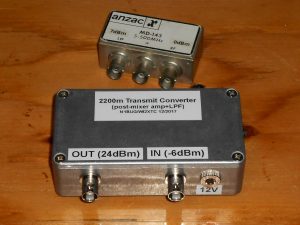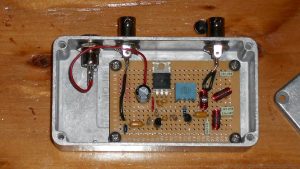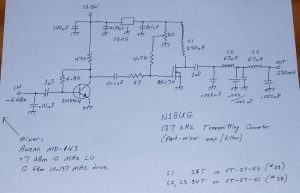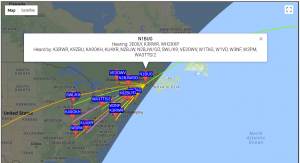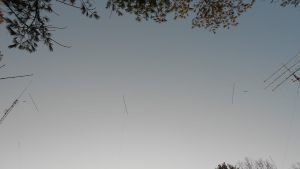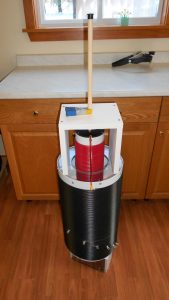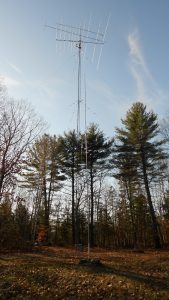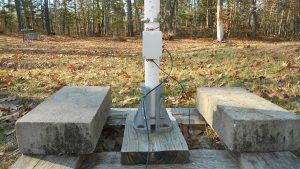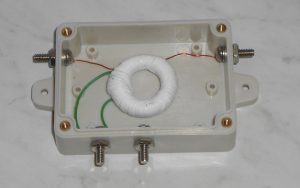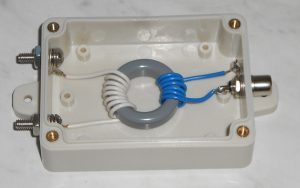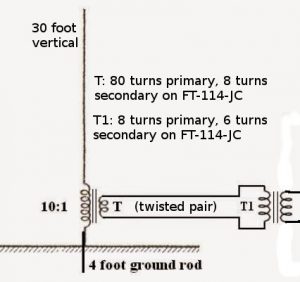It was early morning on the 28th day of March, 2018. Most people were sound asleep but not me. I was in my ham shack, hands trembling, heart pounding as I typed a few letters and numbers into my logging program. I could barely breathe. I had just completed one of the most exciting QSOs of my nearly four decades chasing DX. This single QSO cost more money and time than any other I had ever made. It was a QSO with England. You may wonder what is so exciting about that when any ham with five watts and a piece of wire can contact England from Maine. Well, this was special because we did it on the 2200 meter band. It was the first amateur radio USA to Europe QSO on what is, for us, a new band. This was no easy feat. It required months of station building and four nights just to complete the QSO. Some would call it a ridiculous folly and see no sense at all in it. But to me this is the true spirit of amateur radio, finding a way to communicate against the odds, adapting equipment and technique to accomplish the desired result. It is man and his machine against nature, determined to succeed under the most difficult circumstances.
The 2200 meter band allocation is 135.7 to 137.8 kilohertz in the long wave part of the radio spectrum known as LF or low frequency. In some ways this goes back to amateur radio’s early roots on 1750 meters, but it had been more than 100 years since U.S. amateurs were allowed to transmit in this part of the radio spectrum. These frequencies are not easy! Normal size antennas would be huge. A half wave dipole would be 3400 feet long; a quarter wave vertical towering to a height of 1700 feet. Natural and man made noise tend to be very high in this part of the radio spectrum and ionospheric propagation is feeble compared to the short waves. On top of that, we are only permitted to run one watt effective isotropic radiated power (EIRP). That is flea power compared to what we can use on most any of our higher frequency allocations! By comparison, when I was doing EME (moonbounce) on the two meter band I was legally running about 450,000 watts EIRP. But ham radio DXers who like a good challenge can be a very determined lot. The greater the challenge, the greater the reward.
I became interested in 2200 meters in late 2016 after the local club asked me to prepare a report on this and the 630 meter band, which were expected to soon be opened for amateur radio use in the U.S. At that time the only way to legally transmit on either band was to get a Part 5 FCC license under the experimental radio service. One could almost write one’s own ticket on power limits and frequency allocations but this wasn’t amateur radio. I did apply for and was granted a Part 5 license but never used it since FCC opened these new bands to amateurs just as I was getting a station put together. I found receiving on 630 meters to be relatively easy, if somewhat plagued by noise and available antennas. But 2200 meters was a very different thing. It took weeks of experimentation and testing to detect the first trace of signal on this band. Many weeks later after more trial and error I was rewarded with my first reception of a ham radio signal from Europe on the band when DC0DX appeared in my WSPR decodes. I confess it was then that I first started to dream of someday making a two way QSO across the Atlantic on long wave.
I thought I had plenty of time to build a station, since the FCC process on opening these bands had been dragging on for years. But in the Spring of 2017 the announcement came that we would get these new bands in a few months! Now the race was on. I frantically began building transmitting apparatus. I didn’t quite make it for opening day in October but I was on the band a few weeks later. Early amplifiers were plagued by budget shortfalls and poor performance. By mid February, 2018 I had managed to achieve 0.5 watt EIRP, just three decibels below the legal limit. The flood gates opened and to my amazement I started receiving numerous WSPR decodes from European stations. Wow!
I believed a two way trans-Atlantic QSO was in my future but was not sure when. I was eager for an attempt but still very much struggling with equipment and budget. I was hearing stations from Europe. Stations from Europe were hearing me. But for the most part, those who heard me did not have transmitting capability or not sufficient to reach across the Atlantic. The best bet would seem to be 2E0ILY. We had conducted tests earlier in the season and I could often copy his JT9 beacon. Chris could occasionally copy my WSPR signal but not at sufficient strength for JT9 to be viable. I knew there were ways to get it done, but this would take several nights. I was hesitant to ask anyone to commit such effort and time to a QSO.
As the relatively quiet season was drawing to an end I realized another season is never guaranteed for any number of reasons. I had given the matter considerable thought. There were no practical digital modes which would work with the low signal levels involved. Two old school modes came to mind: QRSS and DFCW. Both are very slow, trading time for weak signal detection capability. QRSS is extremely slow CW, so slow in fact that it can only be copied by reading it off a computer screen. In this case, a speed of QRSS60 would be best, meaning that each dot would be 60 seconds in duration. A dash is three times as long, just as in normal CW. This mode requires nothing special for equipment, as it uses on/off keying of a carrier and is fairly tolerant of frequency drift. But, the shortest element, the dot, sets the achievable signal to noise ratio. There is no advantage gained from the dashes being three times as long, so it is essentially time wasted. Time is valuable, as signal fading means you have a limited amount of time to copy the message. DFCW, or dual frequency CW is an offshoot of QRSS in which dots and dashes are the same length but sent on slightly different frequencies so that one may be differentiated from the other. This saves considerable time with no reduction in signal to noise ratio but requires more complex transmitter keying and reasonably tight frequency stability. In a typical DFCW60 transmission, the dot to dash frequency shift is a small fraction of a hertz. Transmitter and receiver drift must be held to less than this in order to avoid dot-dash ambiguity at the receiving end. It would take about an hour to send two call signs at DFCW60 speed. It was now late March. Clearly there would not be enough common darkness between Maine and any part of Europe to allow a QSO to be completed in a single night at this speed.
It may be useful to consider what is a QSO. These days the term means different things to different people. I came up through the DXing ranks with what is now a somewhat old school definition for a minimum acceptable information exchange to claim a QSO under very weak signal conditions. I still firmly believe in the old way, as we are after all supposed to be communicators. That definition is that each station must receive from the other both call signs, signal report or other piece of information, and acknowledgment. This requires that two transmissions be copied in each direction. Anything less than that does not seem like communication to me, and leaves me with no sense of accomplishment.
It seemed the best way to go about it would be to borrow operating and reporting techniques from EME, modifying procedure slightly to account for the much longer period of time required to send a message on the long waves. In this procedure, the letter O would be used as a signal report to indicate full call signs had been copied; R and O would be used to indicate full call signs plus signal report had been copied; R by itself to indicate call signs, report, and R (as part of R and O) had been copied. As for timing, it seemed sensible to use night by night sequencing. That meant the two stations would take turns transmitting, one going the first night the other the second, alternating back and forth throughout the QSO. It would take a minimum of four nights to complete a QSO, assuming the full message could be copied each night. If it wasn’t, additional nights would be required for repeats. That’s really slow! But it did offer some advantages with the equipment available. In order to achieve the required frequency stability I would have to use my QRP Labs Ultimate 3S beacon transmitter. The U3S is a great piece of gear, but editing messages is tedious. Night by night sequencing would give me all day to change the message for the next night’s transmission! A complete QSO would look like this, where bold indicates my transmissions, italics indicate transmissions from the other station:
2E0ILY N1BUG
N1BUG 2E0ILY O
RO
R
Meaning of the first line is obvious. I am transmitting both call signs. In the second line my QSO partner adds the signal report, O, to let me know he had copied both call signs fully. In the third line I send RO which means I have copied call signs and my report, your report is O. In the last line my QSO partner sends R, meaning I have copied all on my end. When I copy the R the QSO is complete. If a message is not copied, or not enough information is copied, then one continues to transmit the previous message until getting something back which advances the QSO.
I had worked out a viable technique. Now I just needed a QSO partner. Just in time I worked up the courage to ask Chris, 2E0ILY if he would be willing to give it a try. I was very happy when he said he’d have a go at it.
We had decided I would transmit the first night, so I set the U3S to send ‘2E0ILY N1BUG’ over and over during the hours of common darkness between our respective locations. It turned out to be an ugly night in terms of weather. I was getting heavy wet snow squalls. Nothing causes a 2200 meter Marconi antenna (vertical) to go out of resonance any quicker than wet snow! These antennas are electrically short and require huge loading coils to resonate them. They are high impedance antennas and the bandwidth is very narrow. These antennas are prone to changing characteristics on a whim. Every time the snow started, stopped, changed intensity or the amount of snow clinging to the antenna changed, the thing went wandering up or down the band and required retuning for resonance on the operating frequency. Fortunately the variometer at the antenna base was motorized and I could adjust it from the comfort of my transmitter room. But I had to keep a constant vigil, watching antenna resonance and adjusting as needed. I had my finger on the switch for variometer adjustment far more than not. After a while my fingers were getting sore from constantly manipulating the tuning switch. Perhaps I shouldn’t have used a miniature toggle switch there. If you think this was an automated QSO without operator involvement, think again! My presence and diligence at the controls was absolutely vital that night!
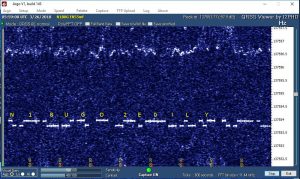
Message copied from 2E0ILY on the second night of the QSO (annotated). Note dots on the lower frequency, dashes shifted 0.187 Hz higher. When the signal is this strong, elements tend to bleed together a little but since they are of fixed length it is still very readable.
The next night it was my turn to listen. Due to the extremely slow speed DFCW is copied visually using software designed for this purpose. Anxiously I stared at the screen. When I wasn’t nervously pacing, that is! I began to see traces of signal, then an odd letter here and there. There was a B, a 2, a Y and I even thought I saw an O but couldn’t be sure. Eventually conditions stabilized and I began to get steady print on the screen. Waiting 60 seconds for a dot or dash to fully paint on the screen can be agonizing. Slowly the elements accumulate and become characters. If you are lucky, propagation holds up long enough to copy the full message. Fortunately, after somewhat of a slow start copy remained solid and I eventually had N1BUG, 2E0ILY and a very nice O painted on my screen! I had copied full call signs and a signal report indicating Chris had got full call signs from me the previous night! We were half way there!
The third night I was transmitting again. Since I knew Chris had already copied full call signs from me, it was not necessary to transmit them at this stage of the QSO. Technically I could have just sent RO repeating throughout the night, but being of the cautious type I decided to include call sign suffixes to provide positive evidence the correct station was being copied. Thus the message I transmitted was ‘ILY BUG RO’. This was a risk as it takes far longer to send than simply ‘RO’ and signal fading can be a huge factor. At least the weather was better and I didn’t have to ride the variometer all night.
Soon it was night four, back to pacing and staring hopefully at the screen. I was especially nervous that night, as I had some strong, drifting interference right on top of Chris! Finally it moved just enough that I could make out ‘BUG ILY R’. There was rapid fading and the dash in the R was much fainter than the rest. Fainter but unmistakably there. I was positive about the R but being the cautious type and realizing this QSO would be an amateur radio first I really wanted to see it more clearly before declaring the QSO complete. The signal faded and nothing was seen for hours. Sunrise at 2E0ILY was fast approaching and I had to make a decision. Was I going to log the QSO or retransmit my RO message the following night in hope of getting better copy of the R on night six? Just before dawn the signal reappeared, very weak. I could barely make out ‘BUG IL’, then the ‘Y’ was quite strong. Given the proximity to sunrise every minute felt like an eternity. Ticking of the clock became offensively loud. It was going to take another four minutes to get an R! Would it hold up that long? Slowly, as the clock ticked and my heart raced, a crystal clear ‘R’ painted on the screen. There were traces of signal for some time after that but nothing I would call readable, save a stray ‘Y’ that somehow came through well past dawn. So it came to be that shortly after 0600 UTC (1:00 AM local time) on this, the 28th day of March, 2018 I entered this QSO into my station log. We had done it!
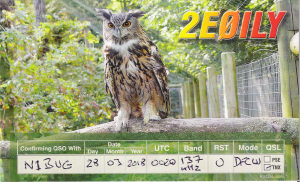
QSL card received for this very memorable QSO!
This was an amateur radio first from the U.S. but nothing new in terms of distance on the 2200 meter band. Canadian stations, operating under amateur call signs but otherwise a program similar to our Part 5 licenses, had worked Europe years earlier. Much longer distances had been covered. But for me this was one of the most exciting QSOs of my nearly 40 years as a DXer. It ranks right up there with my first EME QSO, the QSO that put me on the DXCC Honor Roll and several other notable events such as being credited with the first North American two meter auroral E QSO back in 1989. My thanks to Chris, 2E0ILY for his time and patience to make this happen – not to mention the kilowatt hours of electricity expended.
DFCW may be old school but it gets the job done under extremely difficult conditions. DFCW ‘decoding’ is done by the human operator. Deciding what has been copied is not left to computer software which may use assumption or non amateur radio means to fill in things it couldn’t positively make out over the air. DFCW is painfully slow but here we had a very positive over the air exchange of full call signs, reports and acknowledgement without any shortcuts or fudging. I was very pleased with that!
Although this single QSO cost more than any other, this was a low budget operation. Most of the LF station consists of low cost kits and home built gear. Equipment used at my station for this QSO was the QRP Labs Ultimate 3S driving a home built amplifier to 175 watts output. The transmitting antenna was a 90 foot Marconi (vertical) with a top hat consisting of three wires each 100 feet long, spaced five feet apart. Three one inch diameter aluminum spreaders plus triangular wire sections at each end are electrically part of the top loading. This is resonated at the base with an inductance of approximately 2.3 millihenries. Loss resistance at the time was near 100 ohms, resulting in EIRP of 0.5 watt. For receive I used a 30 foot low noise vertical, band pass filter, W1VD preamp, and a modified Softrock Lite II SDR receiver. The amplifier and most of the receive system has been described on my blog and/or web site. There are photos of the antenna and variometer on my web site.
